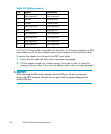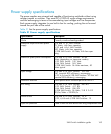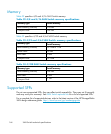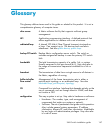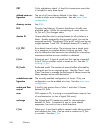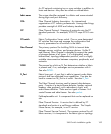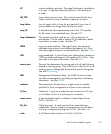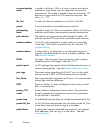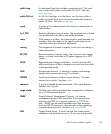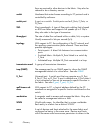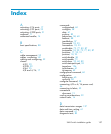FSPF Fabric shortest path first. HP routing protocol for FC switches.
Fx_Port AfabricportthatcanoperateasanF_PortorFL_Port.
G_Port Generic port. A port tha t can operate as an E_Port or F_Port.
A port is d efined as a G_Port when it is not yet connected or
has not yet assumed a specific function in the fabric. See also
E_port, F_port, U_Port.
hard address The A L_PA that an NL_Por t attempts to acquire during loop
initialization. See also defined zone configuration.
idle Continuous transmission of an ordered set over an FC link
when no data is being transmitted, to keep the link active and
maintain bit, byte, and word synchronization.
integrated fabric The fabric created by connecting multiple HP switches with
multiple ISL cables, a nd configuring the switches to handle
traffic as a seamless group.
ISL trunking The distribution of traffic over the combined bandwidth of
multiple ISLs. A set of trunked ISLs is called a trunking group;
the ports in a trunking group are called trunking ports.
isolated E_Port An E_Port that is online but not operational due to overlapping
domain I D s or nonidentical parameters (such as E_D_TOVs).
See also E_D_TOV.
L_Port Loop port. A node port (NL_Port) or fabric port (FL_Port) that
has a rbitrated loop capabilities. An L_Port can be in one of
two modes:
• Fabric mode: Connected to a port that is not loop capable
and is using fabric protocol.
• Loop mode: In an arbitrated loop and using loop protocol.
An L_Port in loop mode can also be in participating mode
or non-participating mode.
See also non-par ticipating mode.
latency The time required to transmit a frame from the time it is sent
until it arrives. Together, latency and bandwidth define the
speed and capacity of a link or system.
link With respect to FC, a physical connection between two ports,
consisting of both transmit and receive fibers.
link services A protocol for link-related actions.
150
Glossary



